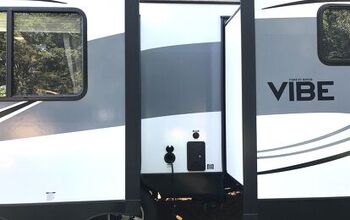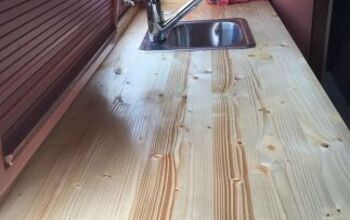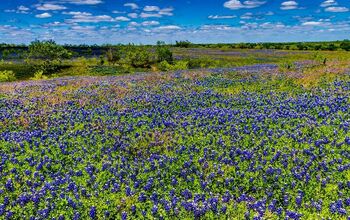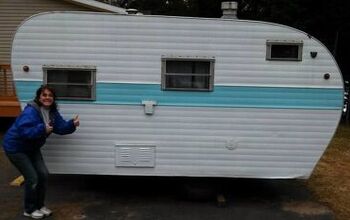How This Tiny Home Village Has Helped The Formerly Homeless

Alan Graham has founded an amazing and unique tiny home village in Austin called Community First.
This is a 12-year vision, designed to lift the chronically homeless, typically seen standing on the street corners, off the streets into a place of community that allows them to heal and hopefully rediscover the purpose in their life.
Let’s take a closer look at how this place works!
The village is a 27 acre master planned RV park. This village defied the norms of traditional homeless shelters, presenting a radically new vision. Alan shares that it took a decade to develop this out of the box model of treating poverty:
“There has never been anything of this kind where the community has come in so deeply and so aggressively into the work that we're doing."
For this community, living in tiny houses is all about interacting within a community. The village has five outdoor kitchens with barbecue pits. In most houses, the kitchen serves as the hub, bringing people together, and that is the purpose of the kitchens here, as well.
The idea of tiny houses being so hip now is a vehicle for getting the general public interested in the project and attracting volunteers.
The houses themselves are well thought out and designed with care and creative solutions for probable issues, such as the open windows at the top of the house that exhaust the hot air, maintaining the house cool at all times.
The laundry, restroom, shower facility is not one space, but instead consists of rooms of individual occupancy, designed to allow residents privacy and dignity, as opposed to community showers, urinals and stalls.
The village has its own landscape and farm program, featuring permaculture gardens that are a network of vegetable and fruit beds that grow food for the residents. While there are volunteers who help maintain the gardens, its main goal is to put the residents in leadership roles. This serves a dual purpose, both empowering the residents and challenging the volunteers’ perception of what a homeless person is.
One more way to welcome people into the village is a B&B, or community inn. It consists of a number of units that are ready to invite people to stay in bed-and-breakfast style accommodations. The idea is to allow people to try the life of the village for themselves, which is the reasoning behind a two night minimum rule.
Each guest gets one of the residents as their guide for the day, including the guest into whatever is going on in the village, such as working in the gardens, helping with the goats or baking bread for the week, all while being in conversation with resident neighbors. This way, the guests’ payment, as well as their presence in itself contribute to the work of the village.
Alan explains that the idea was to create an eclectic community that gave people choice. Most of the decisions made for poor people are made by people who have never experienced poverty themselves and cannot possibly know what is in the best interest of poor people.
The Community First village allows the residents to make those choices for themselves, deciding what exactly their needs are. There are an outdoor movie theater and an amphitheater to draw people in for movie nights, concert nights and worship services, an organic farm, a blacksmithing operation, a hand-tooled wood shop, a community grill, a concession stand for movie nights. They hold competitions and workshops.
In order to allow people to earn a modest living income, the village sets out to create a venue for micro-entrepreneurs.
Whether it is the blacksmithing, or the wood shop, or working in landscaping, or concession stands, or catering, and a myriad of other businesses that are yet to be opened.
An art house empowers gifted people, allowing them to make a living through creativity. Alan explains that people do not need to earn millions, but everyone can earn a decent living through doing small things.
In order to become a resident, one would have to apply through a process called coordinated assessment through one of the village’s partner agencies, that involves a homeless management information system of Austin, a system that exists in most cities of any magnitude.
The number one covenant to live in this community is paying rent. Rents can be as low as $225 a month, all bills paid, to live in a canvas sided cottage, up to about $325 a month for a fancier.
The most expensive micro home would be $375 a month, all bills paid. Moreover, one could opt to live in a fully self-contained recreational vehicle for $380 a month, not including electricity and propane.
Tiny home village
Alan hopes that this project will help create a new movement and advance the discussion about housing from a transactional discussion to a relationship discussion.
It is critical not only for the chronically homeless, but for everybody of every walk in life to come in and re-evaluate how we are living, how we are consuming and if it makes us happy or not.
The creators of the B&B are hoping that this experience might push the guests to become more open to new ideas and reevaluate their current lifestyle and their priorities.
What are your thoughts of a community village as a way of giving homeless people a new life? Would you come and stay at the Community First Bed and Breakfast to witness the incredible life of this village first hand? Share your thoughts in the comments!
Next, check out this Tiny House Tour With The Coziest Bedroom.






















Comments
Join the conversation